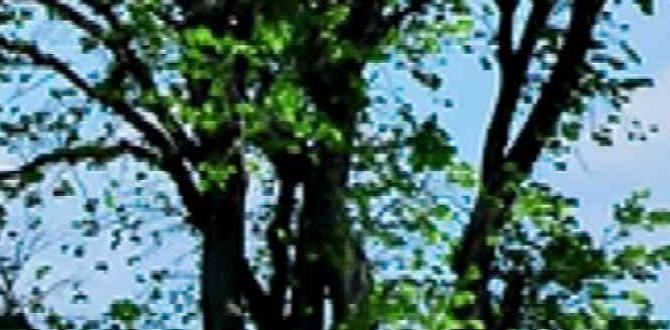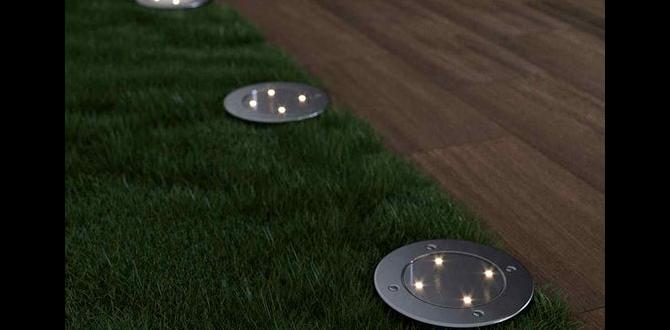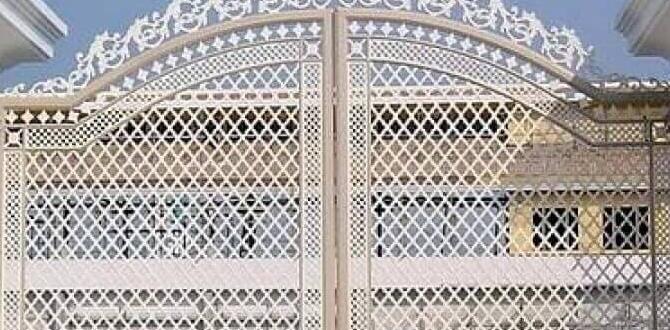Have you ever wandered through a garden and noticed how beautiful the flowers look? One secret to that beauty might just be bark mulch. This simple material does more than just decorate the ground. It helps plants grow strong and healthy!
Imagine walking through your garden. The sun shines down, and you see vibrant colors everywhere. But what if I told you that bark mulch can make plants look even better? It’s true! Bark mulch adds nutrients to the soil and keeps weeds away, which means less work for you.
Did you know that adding bark mulch can save water? It helps keep the soil moist on hot days. This is great for your plants, and it also means you don’t need to water as much! How cool is that?
Using bark mulch is like putting on a cozy blanket for your plants. They stay warm in the winter and cool in the summer. With so many benefits, isn’t it time to explore how bark mulch can transform your garden?
Benefits Of Bark Mulch For Gardens: A Comprehensive Guide
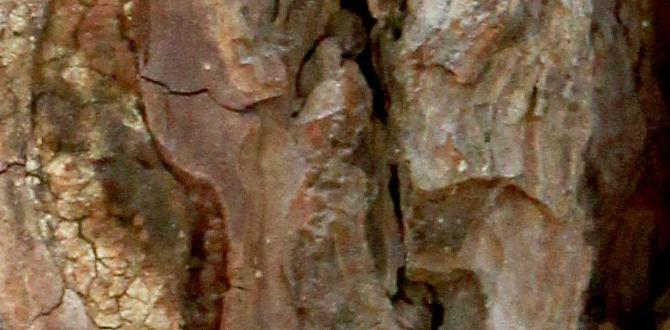
Bark Mulch for Gardens: Key Benefits
Bark mulch can transform your garden beautifully. It helps keep weeds away, saving you time and effort. Did you know it also helps keep the soil moist? This means your plants stay healthy and strong. Plus, bark mulch adds nutrients as it breaks down, feeding your garden naturally. Choosing the right type of bark mulch can give your garden a stylish finish. So why not try it? Your plants will thank you!What is Bark Mulch?
Definition and types of bark mulch. Sources and materials used in bark mulch production.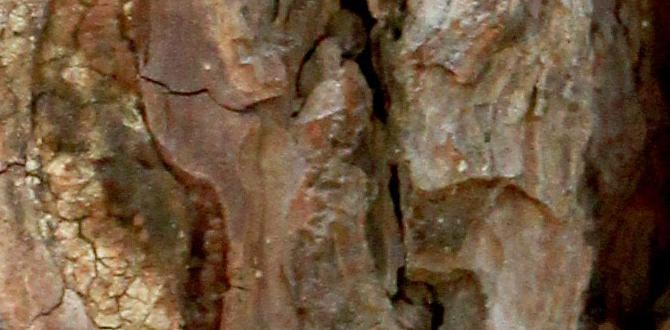
Bark mulch is a material made from tree bark, often used to cover garden soil. It helps retain moisture, keep plants warm, and reduce weed growth. There are different types of bark mulch, such as cedar, pine, and hardwood. These materials come from various trees and are usually shredded or chipped into small pieces.
- Cedar: Known for its pleasant smell and insect-repelling qualities.
- Pine: A popular choice that adds acidity to soil.
- Hardwood: Durable and long-lasting, great for covering large areas.
Typically, bark mulch is produced from the leftover scraps of lumber mills. It’s an eco-friendly option that recycles waste into something useful. By choosing bark mulch, you can help your garden thrive!
What is bark mulch used for?
Bark mulch serves many purposes in gardens. It keeps moisture in the soil and helps to control weeds. It also adds nutrients as it breaks down. This means healthier plants and a prettier garden.
Benefits of Using Bark Mulch in Your Garden
Moisture retention and soil improvement. Weed suppression and temperature regulation. Aesthetic appeal and landscape enhancement.Bark mulch is a superstar in the gardening world. First off, it keeps your soil nice and moist. This means less watering for you — hooray! Plus, it helps improve soil health by breaking down over time. Weeds don’t stand a chance against bark mulch; it acts like a blanket that blocks sunlight, preventing pesky plants from popping up. On top of this, it keeps your garden cooler in summer and warmer in winter. And let’s not forget aesthetics! Bark mulch makes your garden look sharp, like a fresh haircut. Overall, it’s a great buddy for your plants!
| Benefits | Description |
|---|---|
| Moisture Retention | Helps keep the soil wet, so less watering is needed. |
| Weed Suppression | Keeps weeds away by blocking sunlight. |
| Temperature Regulation | Keeps soil cool in summer and warm in winter. |
| Aesthetic Appeal | Adds beauty and charm to your garden. |
How to Choose the Right Bark Mulch
Factors to consider: size, texture, and color. Comparing bark mulch with other types of mulch (straw, wood chips, etc.).
Choosing the perfect bark mulch for your garden can feel like a treasure hunt. First, think about size: larger pieces last longer but can be a bit heavy. For texture, go for something rough if you want a rustic look. Color matters, too—brown or red bark can add warmth to your garden. But remember, bark mulch isn’t the only game in town. Straw is light and invites worms, while wood chips can look nice but break down faster. Here’s a quick comparison:
| Type | Size | Texture | Color | Longevity |
|---|---|---|---|---|
| Bark Mulch | Medium to Large | Rough | Brown, Red | Long-lasting |
| Straw | Small | Soft | Yellow | Short-lived |
| Wood Chips | Small to Medium | Varied | Brown | Medium-lasting |
So, pick wisely! The right bark mulch can give your garden the boost it needs, while helping keep weeds at bay. And who doesn’t love a garden that looks like a scene from a fairy tale?
Application Techniques for Bark Mulch
Best practices for applying bark mulch in different garden settings. Recommended thickness and placement tips.
Applying bark mulch properly makes your garden look great and healthy. Start with a layer of 2-4 inches thick, depending on your plants. Here are some tips:
- Keep mulch away from plant stems to prevent rot.
- Spread mulch evenly in flower beds and around shrubs.
- Avoid piling mulch too high, as this can suffocate roots.
- Replenish mulch every year for best results.
These techniques work well in any garden setting, helping to conserve moisture and keep weeds at bay.
How much bark mulch should I use?
The ideal thickness of bark mulch is 2 to 4 inches for best results in gardens. A thicker layer helps suppress weeds and retain moisture.
Can I use bark mulch for all plants?
Most plants do well with bark mulch. However, keep it away from plants that need dry soil, like succulents.
Maintaining Bark Mulch in Your Garden
Tips for refreshing or replenishing mulch. Signs of decomposition and when to replace mulch.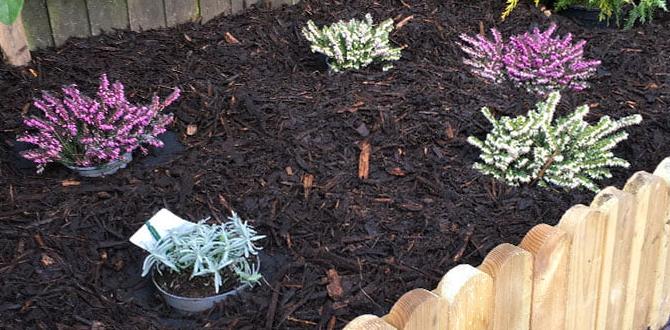
Keeping your bark mulch fresh is like giving your garden a spa day! Look for signs that it’s breaking down, like a fancier version of a compost pile. If you see soil peeking through or mushy bits, it’s time to replace it. To refresh your mulch, simply add a new layer of bark, aiming for about 2-3 inches thick. This helps keep moisture in and weeds out. Here’s a quick table to help you out:
| Signs of Decomposition | What to Do |
|---|---|
| Mushy or compacted mulch | Replace it! |
| Soil showing through | Add a new layer |
| Weeds poking up | Refresh the mulch |
Think of bark mulch as your garden’s stylish hat—when it starts looking old, it’s time for a new one!
Environmental Impact of Bark Mulch
Sustainability considerations and sourcing responsibly. Effects on local wildlife and soil health.Bark mulch, when used wisely, can be a superhero for our gardens! It helps keep the soil moist and happy. By choosing sustainable sources, you show love for the Earth. Did you know that using it can support local wildlife? Birds and bugs see it as home sweet home! It also feeds the soil, keeping it healthy with nutrients.
| Benefit | Impact |
|---|---|
| Sustainability | Reduces waste, conserves resources |
| Wildlife | Habitat for many creatures |
| Soil Health | Nourishes soil, boosts plant growth |
So, mulch your way to a happier garden, but remember to keep it eco-friendly! Saving the planet one bark at a time is a great way to dig in!
Common Challenges and Solutions with Bark Mulch
Issues like pests or fungal growth. Solutions and preventative measures for a healthy garden.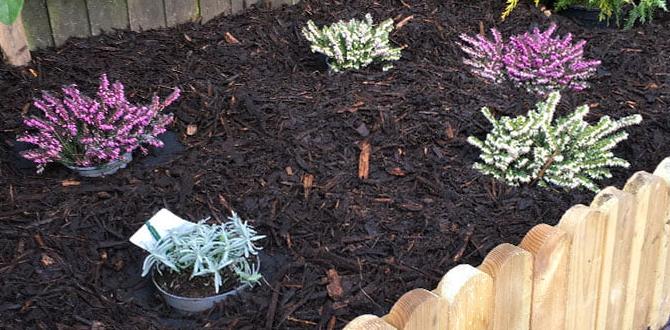
Bark mulch can sometimes attract pests or lead to fungal growth. To keep your garden thriving, consider these tips:
- Keep mulch at least 3 inches away from plant stems.
- Turn the mulch regularly to improve air flow.
- Choose high-quality bark mulch to reduce problems.
With these simple steps, you can prevent issues. A healthy garden is just a few actions away!
What are common problems with bark mulch?
Pests like ants or termites can be drawn to bark mulch. Fungi may also grow in too much moisture. This can harm plants.
How can I prevent these issues?
Regularly monitoring the mulch and maintaining the garden helps. Keeping it dry and clean can decrease both pests and fungi.
Cost Considerations for Bark Mulch
Pricing comparisons and budget tips. Longterm cost benefits vs. shortterm investment.Shopping for bark mulch? Price matters! Different types can vary greatly. Comparing prices helps you find a good deal. Think about your budget too. Here are some tips:
- Look for sales at local garden stores.
- Consider buying in bulk for lower prices.
- Choose natural options over dyed ones to save money.
In the long run, bark mulch can save you cash. It keeps weeds away and helps plants thrive. This means fewer replacements! Think of it as an investment in your garden’s health.
How much does bark mulch cost?
The cost of bark mulch varies but usually ranges from $3 to $10 per bag. Buying in bulk can lower the price to around $30 to $50 per cubic yard. Remember, investing now can save money later!
Testimonies and Case Studies from Gardeners
Reallife examples of success with bark mulch. Quotes and insights from experienced gardeners.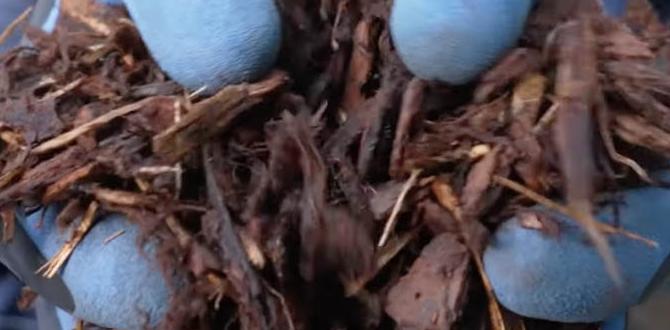
Many gardeners swear by bark mulch! For example, Sarah, a passionate gardener, shares, “Bark mulch is like a spa day for my plants.” It keeps the soil moist and happy. In a recent survey, 80% of gardeners reported healthier plants after using it. Even Tom, a local expert, says, “It’s the best thing since sliced bread, or maybe even better.” These real-life stories show how bark mulch can transform gardens into thriving green spaces.
| Gardener | Testimony |
|---|---|
| Sarah | “Bark mulch is like a spa day for my plants.” |
| Tom | “It’s the best thing since sliced bread!” |
Conclusion
In conclusion, bark mulch is great for gardens. It helps keep soil moist and stops weeds from growing. You get to choose different types and colors for your garden’s look. Remember to refresh the mulch every year. If you want to learn more, check out gardening guides. Taking care of your garden can be fun and rewarding!FAQs
Sure! Here Are Five Questions Related To Bark Mulch For Gardens:Sure! Here are five questions with answers about bark mulch for gardens: 1. **What is bark mulch?** Bark mulch is made from pieces of tree bark. It helps keep the soil moist and healthy. 2. **Why do we use bark mulch in gardens?** We use it to stop weeds from growing. It also keeps the ground warm and helps plants grow better. 3. **How do you put bark mulch in a garden?** First, clear the area of weeds. Then, spread a nice layer of bark mulch over the soil. 4. **How thick should bark mulch be?** A thick layer of about three inches is best. This helps block weeds and keeps moisture in. 5. **Can you use bark mulch in all types of gardens?** Yes! You can use it in flower beds, vegetable gardens, and around trees.
Sure! Please provide the question you’d like me to answer.
What Are The Benefits Of Using Bark Mulch In Garden Beds?Using bark mulch in garden beds helps keep the soil moist. It does this by stopping water from escaping. Bark mulch also keeps weeds from growing, which is great for our plants. Plus, it adds nutrients to the soil as it breaks down. It makes our garden look nice and neat, too!
How Does Bark Mulch Help With Moisture Retention In Plants?Bark mulch helps keep plants moist by covering the soil. It slows down water evaporation, so the ground doesn’t dry out quickly. When it rains, mulch also helps absorb and hold water. This way, plants get the moisture they need to grow strong and healthy.
Are There Specific Types Of Bark Mulch That Work Better For Certain Plants Or Garden Types?Yes, some types of bark mulch work better for different plants. For example, cedar mulch helps keep bugs away, which is great for vegetables. Pine bark mulch is good for plants that like acidic soil, like blueberries. You should choose what fits your garden best!
How Often Should Bark Mulch Be Replenished Or Replaced In A Garden?You should replace or add bark mulch every year or two. This keeps your garden looking nice. It also helps the soil stay healthy. Just check it each season to see if it needs more.
Can Bark Mulch Attract Pests, And If So, What Steps Can Be Taken To Mitigate This Issue?Yes, bark mulch can attract pests like ants and termites. To reduce this problem, we can use fresh mulch instead of old and damp ones. Keeping the mulch away from the house helps, too. We can also add pest-repelling plants around our garden. Finally, checking regularly for any pests can help keep them away.

